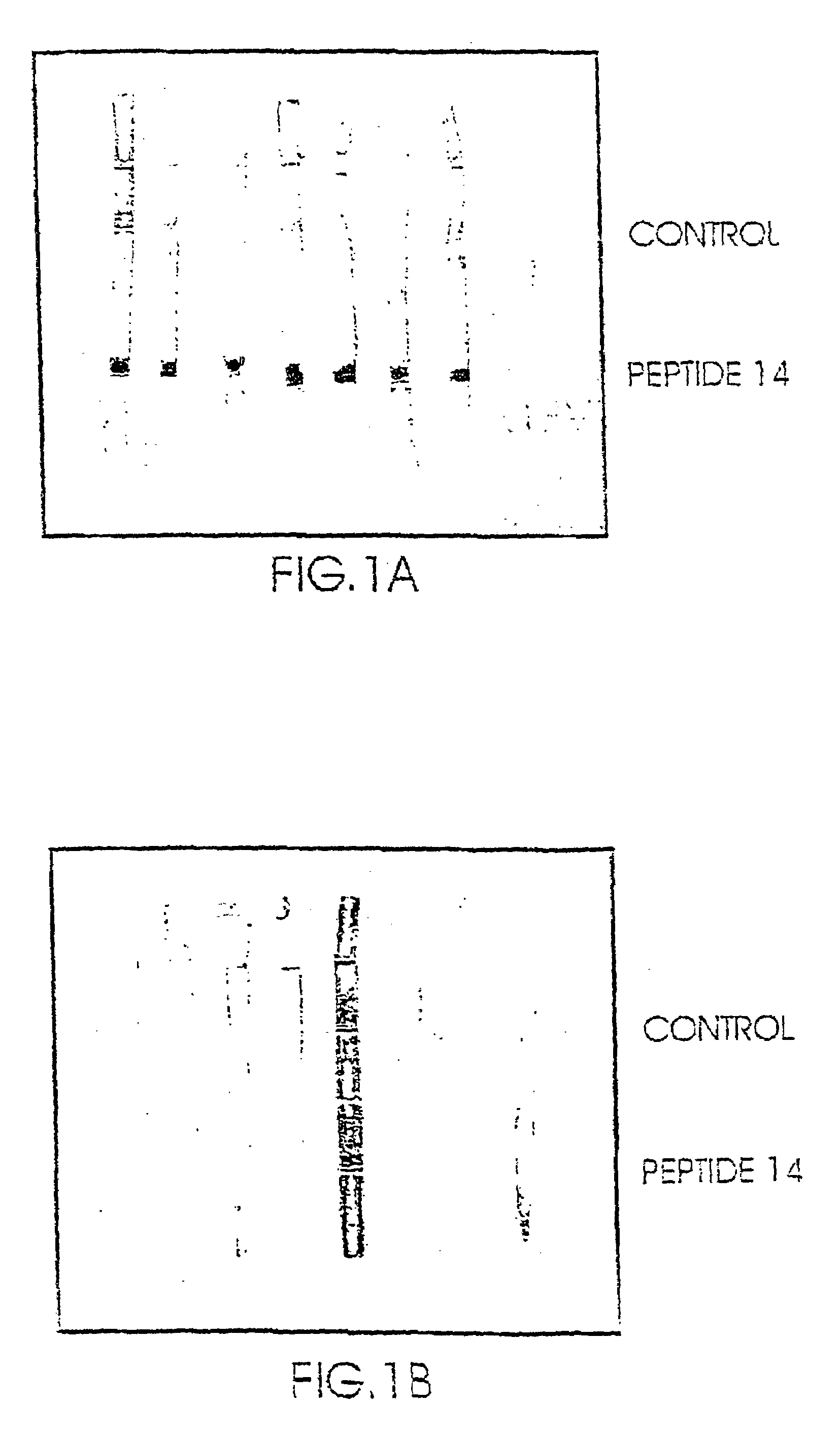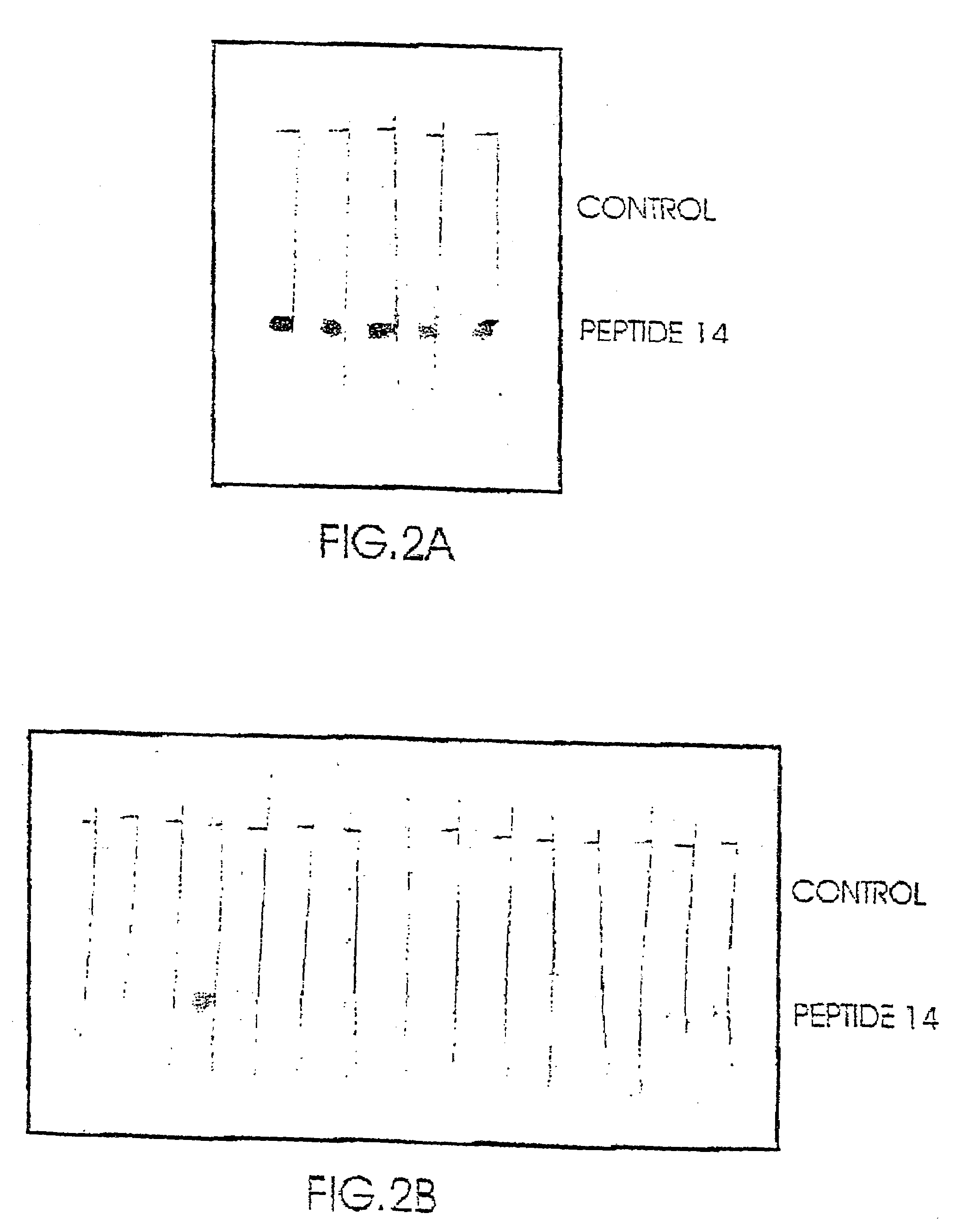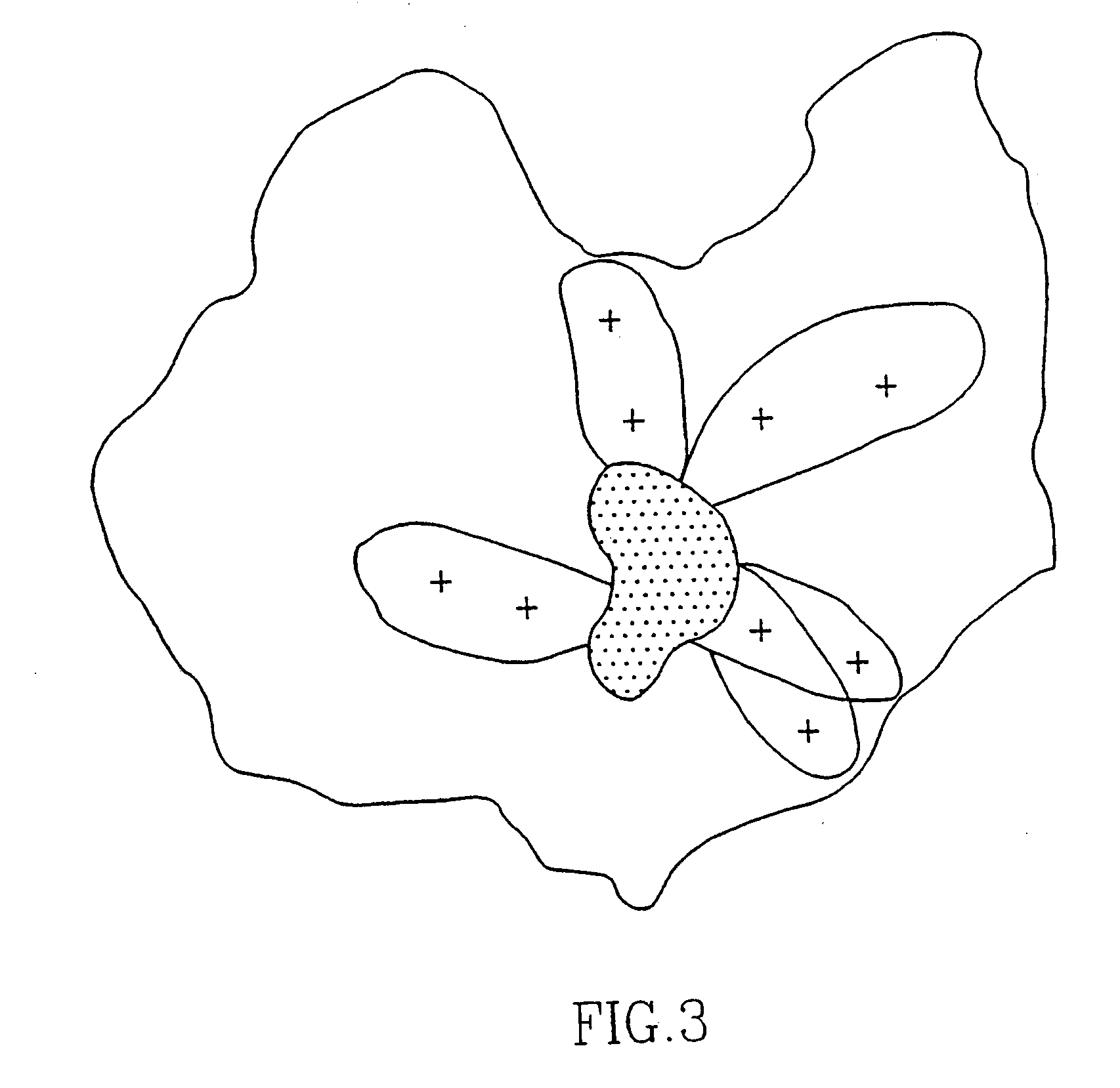Assay for the diagnosis of schizophrenia based on a new peptide
a peptide and diagnostic test technology, applied in the field of diagnostic test for schizophrenia, can solve the problems of enormous economic and social burden on society, and achieve the effect of reducing the cost of treatment and improving the quality of li
- Summary
- Abstract
- Description
- Claims
- Application Information
AI Technical Summary
Benefits of technology
Problems solved by technology
Method used
Image
Examples
example 1
Identification of Immuno-Reactive Proteins
[0113]The following proteins have been identified as such capable of binding autoantibodies present in high levels in schizophrenic patients at a high level as determined by the assay described in 1.3 above:
[0114]Protein:
[0115]Glyceraldehyde-6-phosphate dehydrogenase
[0116]Enolase
[0117]Keratin
[0118]Hepatocyte growth factor
[0119]Extracellular calcium sensing receptor
[0120]The above identified proteins were tested for their binding capability to plasma samples obtained from schizophrenic patients and to plasma samples obtained from control non-schizophrenic patients. The results showed that it was not possible to use the above proteins to discriminate between a plasma sample obtained from a schizophrenic patient and that obtained from a non-schizophrenic individual. i.e. the binding results were not conclusive.
[0121]The binding activity of the above two enzymes was then tested by reacting them with SDAs (prepared from samples obtained from schi...
example 2
Identification of the Epitope in the Digested Proteins Capable of Specific Binding to SDAs:
[0124]Only the enzymatic digest of the Enolase revealed one peptide which was immunologically active (amino acids 372–399; The peptide having SEQ ID NO: 2 in the following Table 2), i.e. was capable of binding SDAs to a higher extent and its capability of binding to NSDAs.
[0125]Based on the sequence of the epitope identified in the digested proteins, a number of peptides were synthesized by the method described in 1.8 above. The synthesized peptides were then evaluated for their binding activity to SDAs as compared to NSDAs as described above.
[0126]As seen in Table 2 below, several of the synthesized peptides showed a substantially higher binding activity to SDAs as compared to their binding to NSDAs (indicated as YES in the table) while others showed no significant differences in their binding to samples from schizophrenic and non-schizophrenic individuals (designed as no in the table).
[0127]...
example 3
Characterization of Peptide SEQ ID NO: 3
[0129]Laser desorption mass spectroscopy of Peptide SEQ ID NO: 3 (comprising three cysteins) directly after synthesis shows the presence of a monomer without a ring formation via the cysteins. However, after dissolving the peptide (about 4 mg) in 1 ml water / DMF / DMSO (1:1:1;v:v:v) and leaving the solution overnight at room temperature, the peptide forms a ring via two cysteins and a dimer via the remaining free cystein. No higher polymers could be detected. When testing the binding activity of the two forms of the peptide to SDA, it became clear that the dimer form of the peptide was much more active in binding SDAs than the non-dimer form.
[0130]Chemical analysis of the peptide by reduction, e.g. by mercaptoethanol or sodium borohydrid, destroyed the immunological activity completely, whereas oxidation, e.g. air or oxygen, restored the immunological activity.
PUM
 Login to View More
Login to View More Abstract
Description
Claims
Application Information
 Login to View More
Login to View More - R&D Engineer
- R&D Manager
- IP Professional
- Industry Leading Data Capabilities
- Powerful AI technology
- Patent DNA Extraction
Browse by: Latest US Patents, China's latest patents, Technical Efficacy Thesaurus, Application Domain, Technology Topic, Popular Technical Reports.
© 2024 PatSnap. All rights reserved.Legal|Privacy policy|Modern Slavery Act Transparency Statement|Sitemap|About US| Contact US: help@patsnap.com










